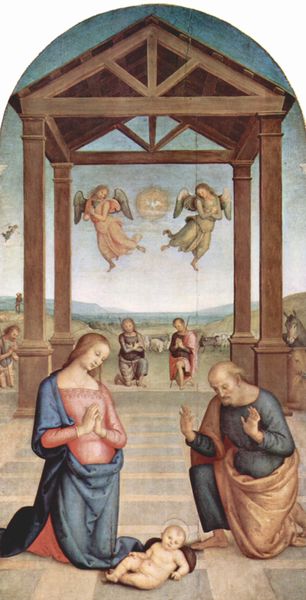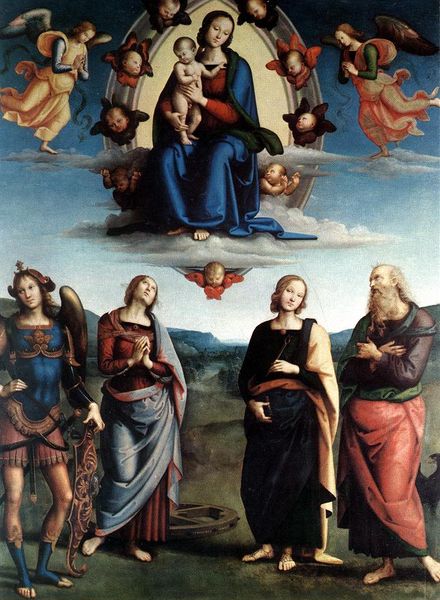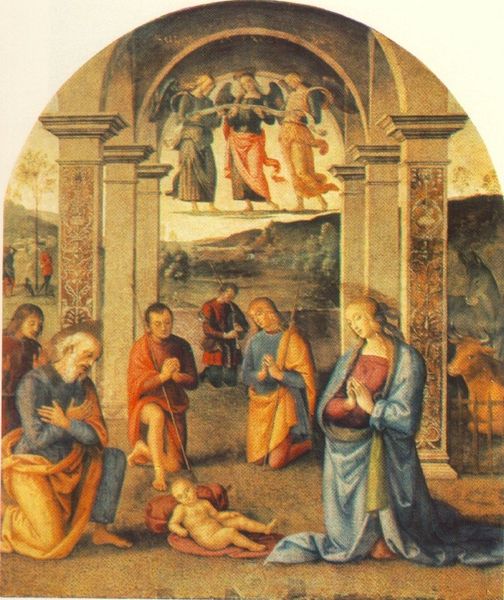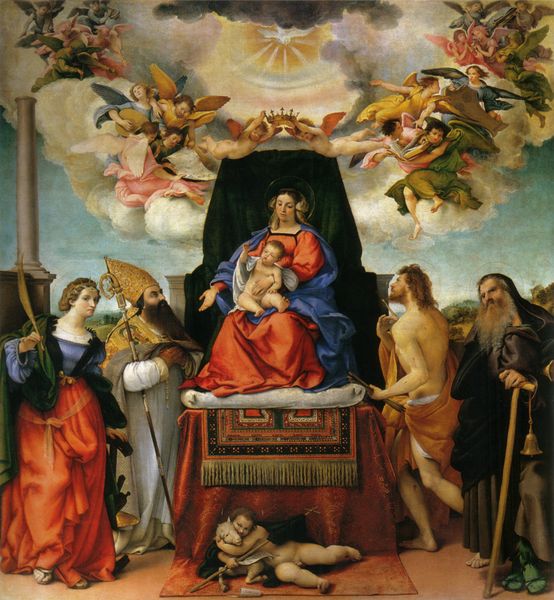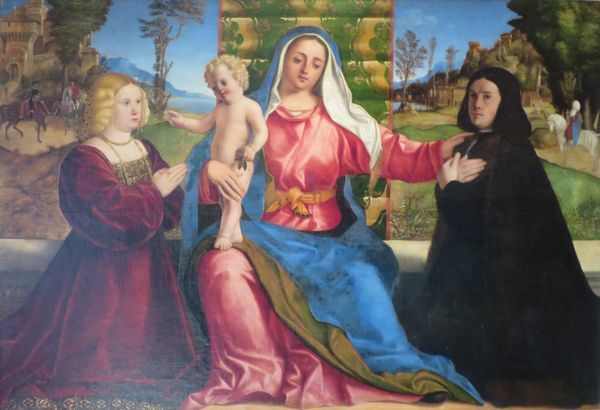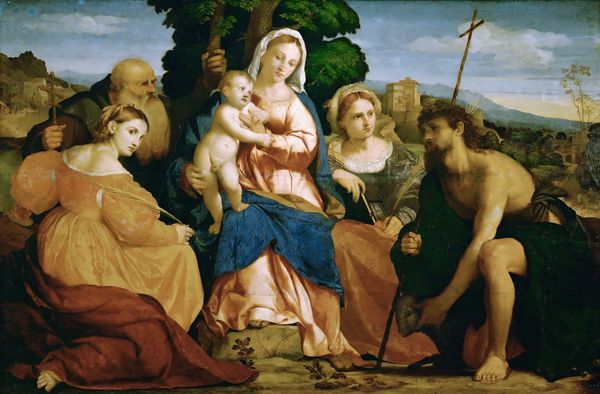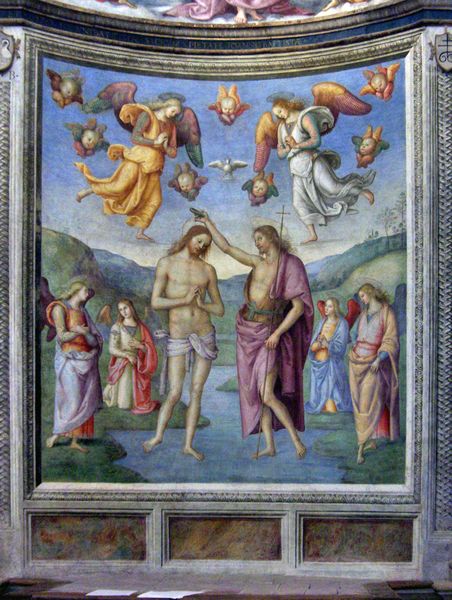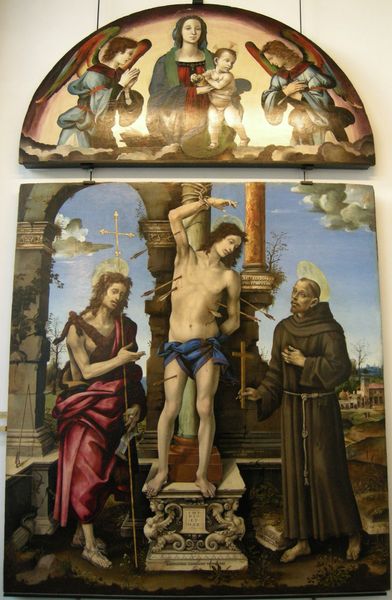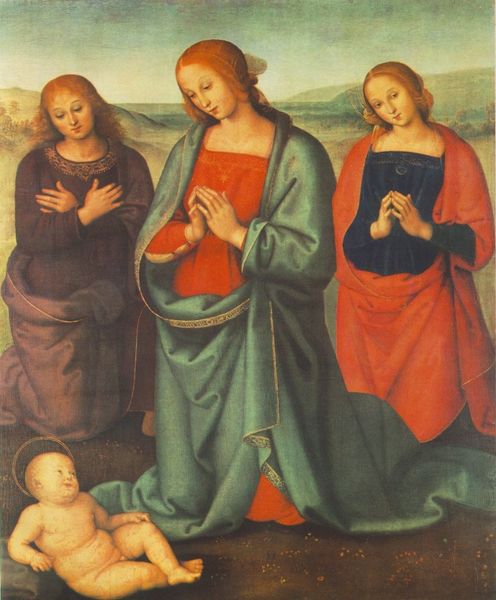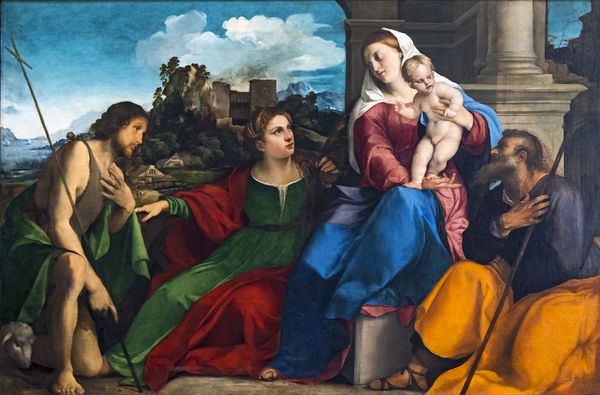
painting, oil-paint, fresco
#
narrative-art
#
painting
#
oil-paint
#
figuration
#
fresco
#
oil painting
#
history-painting
#
academic-art
#
italian-renaissance
Dimensions: 197 x 165 cm
Copyright: Public domain
Editor: So, here we have Albertinelli’s "The Annunciation," likely an oil painting or perhaps a fresco given its appearance. It feels strangely segmented to me, like a triptych but painted all at once. What’s your initial read on this piece? Curator: You've hit on something key there, its artificial segmentation! My mind immediately dances with Renaissance stagecraft – think about those elaborate theatrical backdrops and how they used perspective. Doesn’t this feel like a performance frozen in time? Each character exists in their own carefully constructed little world. What I find striking is the artist using the old-fashioned triptych form, as if they are self-consciously choosing tradition while dancing with new approaches to space and depth. Editor: That's a fascinating point! It's almost as if he's putting the past and present into conversation. The angel kneeling before Mary, it's all so classical. Yet, there's something almost… unsettling about John the Baptist crammed into that side compartment. Curator: Exactly! He is definitely not part of the same scene and crammed into what I am sure is an architectural invention. Is he observing? Commenting? Perhaps Albertinelli is playfully acknowledging the artificiality of it all. Plus, notice the lighting. That stark light on John compared to the softer glow on Mary...it suggests different realms of existence clashing within the same frame. He looks decidedly melancholic for someone witnessing such a celestial event. Or am I reading too much into a poor spatial decision? Editor: No, that's brilliant! So it's not just a straightforward religious scene, but an exploration of space, tradition, and maybe even a bit of artistic doubt? Curator: Artistic doubt? I like that! Yes! I suspect Albertinelli, despite his classicism, was wrestling with how to convey the divine in a rapidly changing artistic world. Editor: Wow, I initially thought this was just another pretty Annunciation scene, but now I see it's full of interesting complexities! Curator: Art always is, isn't it? That's the joy of looking, or maybe over-looking… you start down one path, and suddenly you’re lost in a forest of new questions.
Comments
No comments
Be the first to comment and join the conversation on the ultimate creative platform.
